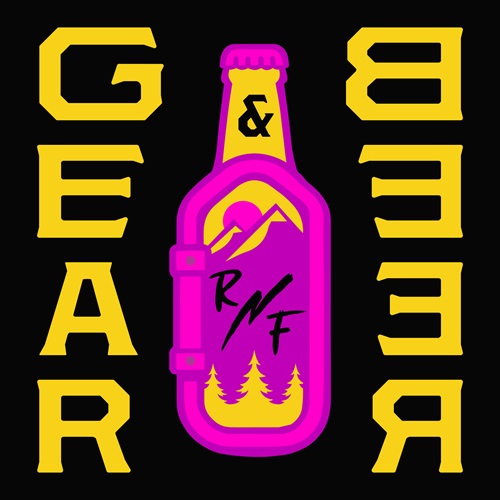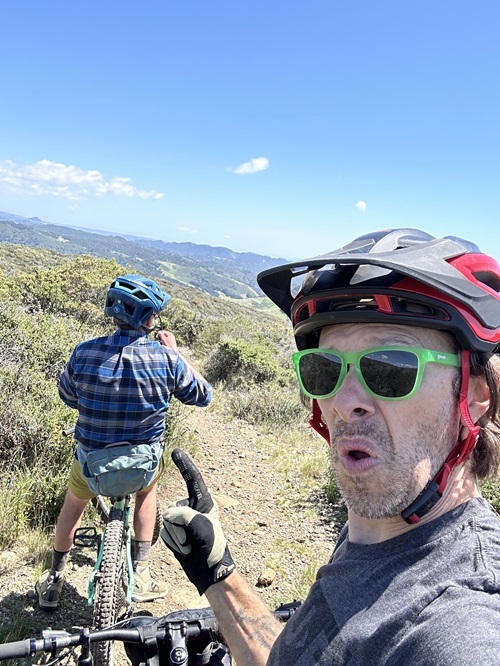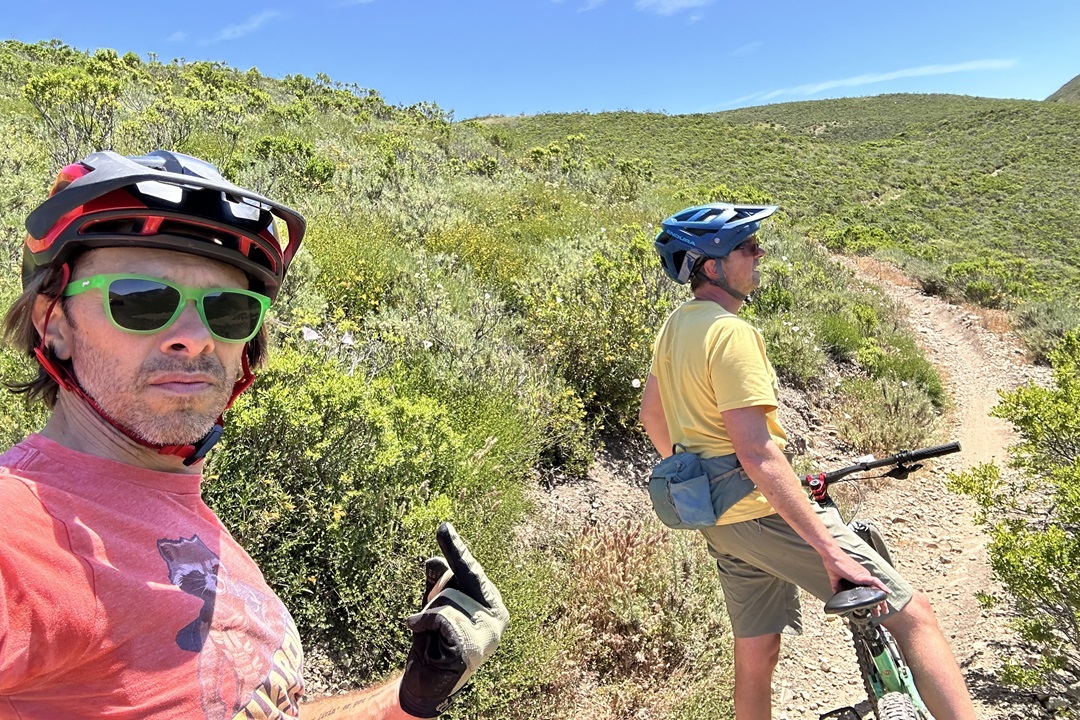Outdoor equipment is a solid topic for a podcast. But toss a few IPAs and hefeweizens into the equation, and you’ve significantly improved the premise of your show. That’s the idea behind Gear & Beer, where outdoor industry veterans Justin Housman and Colin True chat about things like multi-tools, e-bikes, and wetsuits while sampling all manner of adult beverages. (Four words: pineapple orange coconut sours.) Terrain sat down with the podcasting duo to discuss the latest trends in outdoor equipment, their biggest gear turnoffs, and their vision for the industry’s future.
Terrain: What’s the current state of outdoor gear?
Justin: At this point, everything is good, and everything works. So I don’t know how in the world you choose anything other than brand loyalty. You know, something speaks to you, or you like the colors of Cotopaxi or whatever. But everything is good. Even cheap stuff is good. Sierra Designs is pretty cheap, and it’s really good. It’s all way better than a lot of things were 20 years ago, so it’s like a golden era for a consumer.
Colin: Yes to everything Justin said. The bones of this industry are based on innovation. In the ’60s, everybody was backpacking in flannel shirts and jeans, and then suddenly, there were these performance fabrics. That allowed for brands to form and start making money, which led to adoption by fashion brands and hip-hop culture and stuff like that. But the innovation turned off at some point, and the brands kept marketing on the back of innovation. And to Justin’s point, things are pretty good now. You can go to Walmart and get a perfectly competent outdoor kit.
Justin: Or you can go to REI and buy the cheapest thing, and it’ll work great.
Colin: Exactly. What gives me a little hope is that now the focus feels more about how we improve the outdoor experience. How do we get people outside and help them have a better time outside?
Justin: I also think that people are probably a bit exhausted by the over-engineering of gear. Things are over-engineered. And I think there’s probably going to be a movement back toward simplicity and natural fabrics, natural fibers, things like that. I mean, we talk about this a lot on the podcast. I think as more people get into the outdoors, maybe you will start to see people realize they don’t need the fanciest crap on the shelf. So we can make do with what you already have.
Colin: Cotton will not kill you. You can wear it in the backcountry. You can wear a cotton T-shirt to go mountain biking. You won’t die.

Colin True (left) and Justin Housman are both veterans of the outdoor industry. (Courtesy of Gear & Beer)
Is there a specific outdoor gear trend that you’re a fan of?
Justin: I would say natural fibers. I get more pitches now from PR people about natural fabrics and fibers. Like, Salewa recently sent us some natural fiber stuff that was cool. I think that movement is probably coming.
Colin: Also, the idea of what’s considered outdoor is changing. When we were young, outdoor was hiking and camping and backpacking and mountain biking and paddling. And now, if you go outside, that’s outdoor. And this is why we joke about pickleball all the time on the pod. You’re outside. It’s kind of outdoor.
Justin: That’s a good point. The blossoming of what is considered outdoors. That seems new. I resisted this at first, but there’s definitely a push away from the strict definition of the term. And I think I’m finally ready to say it’s a cool trend.
Colin: It’s true. Is surfing outdoor? Guess what? To my 18-year-old daughter, surfing is outdoor. She’s like, you’re in the ocean doing stuff. That’s outdoor.
Justin: Here’s another trend: Plus sizing is huge.
Colin: That’s a big one.
Justin: Gearing things toward an underserved market is good. And that’s a huge trend.
Colin: The next big thing is not going to be a fiber. What’s the breakthrough that’s coming that’s going to change things? It’s going to be more applications of what we have and how we get more people outside.

One of the requirements of a successful podcast: a cool-looking logo. (Courtesy of Gear & Beer)
Is there a specific outdoor gear trend that you’re not a fan of?
Justin: Extravagant overlanding. I’m a huge off-road fan. I drive off-road. I drive a truck. But you would never know from looking at my truck from the outside that I go to crazy places. So I’m not a huge fan of the ostentatious overlanding trend. Like, “I’m an outside person!” The overlanding thing to me has jumped the shark. I guess I’m not a fan of anything that’s overly expensive and complicated.
Colin: I’m assuming there’s a customer for that.
Justin: Oh, there totally is. Everyone in Marin County.
Colin: But also, if I were going to get more into doing overlanding stuff, I would try to do it in my Jetta. I’ve taken my Jetta on dirt roads and it was fine.
Justin: I want to get back to the point where people are living in a Honda Fit for three weeks in southern Utah to climb stuff.
Colin: One of my hardcore climber dirtbag buddies who lived in Utah, he had a Honda Accord wagon. It was the most beat to shit thing. And he would go all over southern Utah, front-wheel drive only. Never got stuck, never had a problem. He would go backcountry touring in the winter. It’s like, hey, this is a real thing that people do in the outdoors. But it does feel like the overlanding thing has gotten excessive.
Some of this stuff has gotten crazy expensive.
Justin: You don’t need any of it.
Colin: It’s probably OK if that happens to a certain degree as long as we come back down to earth. Like, you can buy a van, one of those built-out, crazy vans, for $150,000 or whatever, and typically you really are only going to use it two weeks out of the year. Most people aren’t going to live in it. But now you can just rent that van for a fraction of the cost and go have the exact same experience.
Justin: I’ll make another specific example: mountain bikes. A Pivot costs $6,000. There’s no reason for that. You’d be just fine with a $1,200 hardtail, for the most part.
Colin: We eschew technology.
Justin: Honestly, I could give you more things that I don’t like than I like.

When they’re mountain biking or doing Gear & Beer, the guys host another outdoor podcast called Rock Fight. (Courtesy of Gear & Beer)
Is there anything on the horizon that you’re hopeful about? In terms of outdoor gear and outdoor recreation?
Justin: I do feel like at some point in the next 20 years there might be a grand coalition between this type of outdoor and hook-and-bullet outdoor, where we really start moving the needle on conservation. I feel like that’s coming.
Colin: Yes.
Justin: And it might not be that partnership. It might be more the awareness of how important outdoors are for mental health. I think there’s just more of a gradual awareness of how important this is. So I think just building on that is huge.
Colin: I think there’s a lot to be optimistic about. We do need more of the outdoor rec roundtable stuff. The outdoor economic conferences that are happening, the offices of outdoor rec that are happening locally at state levels. I think there’s a huge future in that, getting more people involved, creating more organization around getting people outside regardless of how you want to get outside.
Justin: Also, the next generation of outdoor leaders is not going to look like or think like the last generation. And that is on its way, and that’s pretty exciting. It’s still bubbling under the surface. It hasn’t happened yet. But that’s coming.
Author: Shawn Donnelly is the managing editor of Terrain.
Top image: Colin and Justin navigate a trail. (Courtesy of Gear & Beer)


Leave A Comment